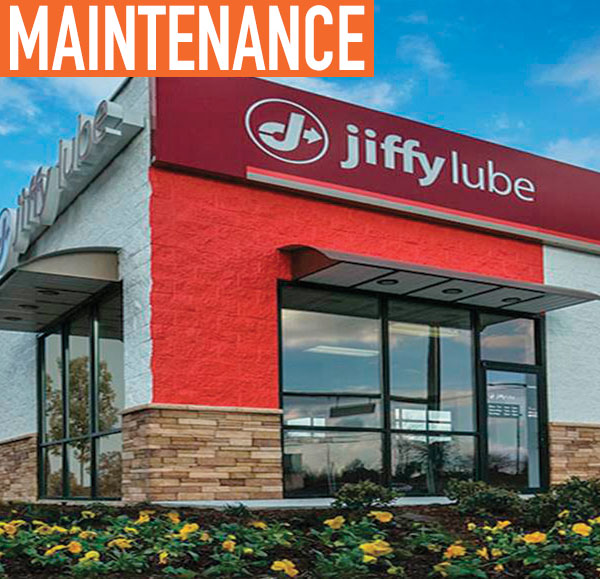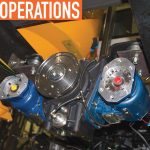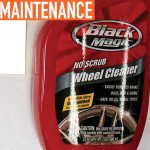It’s always difficult to give up something that’s worked so well for you, but it becomes crucial as a fleet manager to know when to make the call of retiring versus retooling your vehicles. While it can be a tough decision, there are a few guidelines that take into account both the business side of the decision and your drivers’ safety.
OBJECTIVES
If you’re a fleet owner, the focus is developing and deploying an effective maintenance strategy. The three objectives of proper maintenance are maximizing the life of your vehicle, optimizing performance, and minimizing costs. Each of these pillars can be best satisfied through a one-stop shop maintenance partner, which is essential to streamlining efficiencies and thus cutting costs. Significantly more so than a general consumer, fleet managers must weigh the opportunity cost of ignoring preventive maintenance (PM) early on only to pay more in costly repairs later. Deploying a strategy by utilizing a one-stop shop for fleet maintenance also guarantees a complete maintenance schedule each time a vehicle is serviced.
One key maintenance piece is a regularly scheduled oil change to ensure engine longevity and peak performance, but there are others, as well. During routine oil changes, other items, including the brakes and tires, as well as filters, fluids, lights, and windshield wipers are checked for both safety and performance. Tires, like engine oil, are wear items and proper maintenance in the form of regular tire rotations extends tire life while simultaneously optimizing safety and performance.
BE PROACTIVE
Proper maintenance not only includes reactive activities, but proactively reviewing and determining a vehicle’s condition and needs during appointments. In short, problems can arise when a vehicle is not inspected properly. For example, missing the need for brake pad replacement, a normal wear item, may result in a metal-to-metal situation damaging both the calipers and the discs. Instead of incurring a minimal cost for pad replacement, you then have an expensive brake repair job.
Proactively inspecting a vehicle’s condition can also lead to discovering hidden problems that wouldn’t otherwise be obvious to a driver. One of the most effective parts of a routine inspection is a tire rotation and examination of uniform wear patterns. Oftentimes, wear patterns on tires can indicate a larger handling, suspension, or alignment issue in the vehicle, preventing a wide range of dangerous situations for the driver, as well as costly repairs.
DRIVER EDUCATION
The challenge is to make sure drivers follow vehicle manufacturer recommendations for PM and that they’re able to get vehicles in for maintenance in a timely fashion. Retirement is impacted extensively by how well you take care of your fleet and the best tool to optimize vehicle life is to be sure that your drivers are as educated as possible on PM. While it may be inconvenient to pull a vehicle off the road for repair and maintenance, regular maintenance is a proven way to lengthen vehicle retirement and ultimately reap greater overall cost efficiency.
TRACK AND EVALUATE
There is a range of options that fleet managers can utilize for tracking vehicle maintenance, including paper-based, as well as more recent electronic tracking systems. Utilizing electronic systems via a centralized billing process allows managers to draw additional insight into when, where, and what maintenance is performed and identify trends within a fleet. Often, these methods, paper or electronic, are coupled with direct driver communications, stressing the need for regular maintenance and offering information regarding the locations of local partners.
In evaluating the condition of your vehicles, you may want to consider such questions as: Is gas mileage dropping significantly? Are maintenance costs rising beyond initial projections? Are vehicles down for a long period of time for extensive repairs? These key questions should help guide your overall evaluation of the vehicle and make maintenance and/or retirement questions easier to answer.
A full vehicle inspection—brakes, tires, axle/drive, steering/suspension, etc.—by a trained, experienced technician, coupled with a detailed review of the vehicle’s maintenance history, is the best way to evaluate a vehicle’s status. Full vehicle inspections on a regular basis are also necessary to ensure safety within a fleet, as a minor inconvenience such as a broken windshield wiper or low fluid levels can become a major safety hazard for drivers.
WHAT IT BOILS DOWN TO
Ultimately, it’s a matter of economic pressure and staying keenly aware of opportunity costs of fleet management. To overcome the burden on budgets, managers should weigh the cost of general maintenance to the overall life and value of the vehicle. If you’re a fleet manager practicing an aggressive strategy, you’re going to save money. It’s about managed costs that preserve the highest opportunity for the vehicle to stay out on the road instead of sitting on the side of the road.
ABOUT THE AUTHOR:
Scott Cudini is a business model development manager for Jiffy Lube International.
_______________________________________________________________________
MODERN WORKTRUCK SOLUTIONS: JUNE 2016 ISSUE
Did you enjoy this article?
Subscribe to the FREE Digital Edition of Modern WorkTruck Solutions magazine.
![]()




